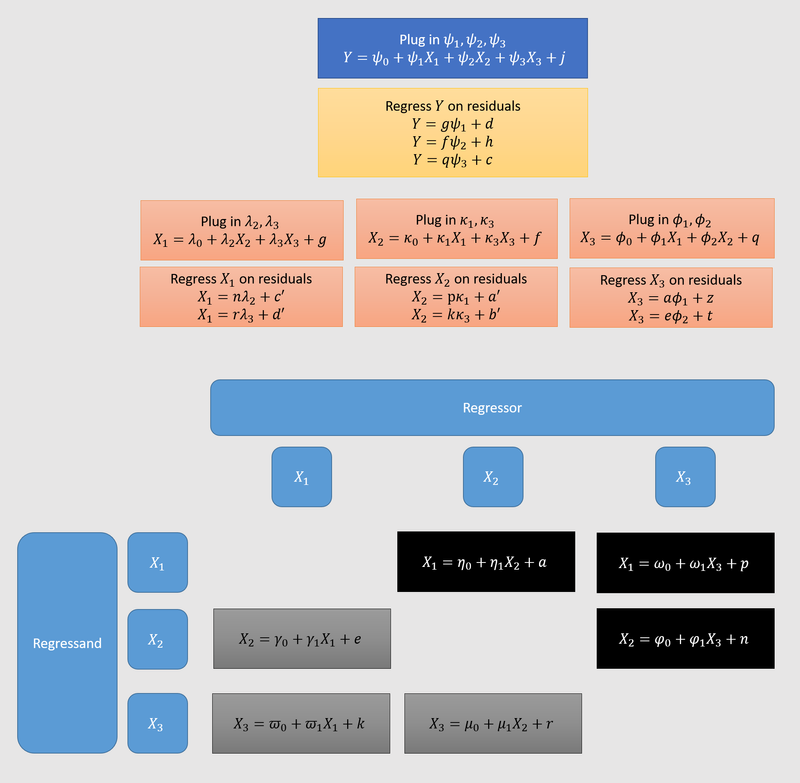Ontology and personal identity
ONTOLOGY AND PERSONAL IDENTITY, a play in one act and two scenes
ACT I
SCENE I. The Ruskin School of Art.
Enter ARTHUR and MEREOLOGIST
Arthur: I love art. I collect clay sculptures.
Mereologist: Aha, look at all my clever mereological paradoxes involving lumps of clay1. We are led to the conclusion that two objects can share the exact same matter at the same time (or somesuch).
Enter NIHILIST
Nihilist [in an evil nihilistic voice]: All the purported puzzles of mereology dissolve if we make no existence claims about ordinary objects2. When we speak of the statue existing, we are speaking loosely. If a clever mereologist presses the point, we should concede that we really mean “there is matter arranged statue-wise” and not “there is a statue”.
Mereologist [clutching his pearls]: No objects! What an extreme, radical view.
Nihilist: Not so. The view has no practical consequences. In everyday life, we can keep speaking loosely and be prefecly well understood. In ordinary life, no-one cares about this weird, ghostly “existence” property. It’s only in the presence of metaphysicians that we have to retreat to the more cumbersome language to be perfectly exact.
Arthur: Yes, I agree. When I sell a sculpture at an auction, all anyone cares about is that they will get the statue (or the matter arranged statue-wise), and that I will get the money. No one will ask “but does the statue really exist?”. Similarly, if I am admiring the “statue” in my own home, I am perfectly indifferent one way or another to whether it “exists” as a statue. “It” is there for my eyes to look at, and that is all I care about.
Mereologist: But then you live a life of self-deception, for in truth you believe you have no statues in your collection at all!
Arthur: I hate philosophy. I’m going to leave you two and go look at my clay arranged statue-wise.
Exeunt
SCENE II3. All Souls College basement, at night.
Enter ROB and DEREK PARFIT’S EVIL TWIN
Rob: I care a lot about being rational.
Derek Parfit’s evil twin (DPET): You do? Let me try to help you with this goal.
Rob: Sure.
DPET: In ten years I will either torture you, or torture a random stranger. Which would you prefer?
Rob: I would prefer that it be the stranger, obviously.
DPET: What is your reason for that?
Rob: Rob+10 will be identical to me. It’s rational for me to care about people that are me.
DPET: You would say you have a rational reason to care about future people if and only if they are identical to you? (The identity matters (IM) view)
Rob: Yes.
DPET: Take the fission case4. You could take multiple occupancy view.5
Rob: No, I find it absurd.
DPET: You could take the no-branching view.6
Rob: No, it is a silly view. It means that neither Lefty nor Righty is you. They both come into existence when your cerebrum is divided. If both your cerebral hemispheres are transplanted, you cease to exist—though you would survive if only one were transplanted and the other destroyed. Fission is death. You can survive hemispherectomy only if the hemisphere to be removed is first destroyed. This is absurd.
DPET: We have found no plausible defence for the IM view. Hence you must abandon it, and with it your justification to prefer that the random stranger be tortured.
Rob: Oh no. This is a horrible bind, I must accept either torture or irrationality! But wait, could this be a mere sophistical trickery like that of the mereologist? I shall simply replace the IM view with the relation-R-matters 7 (RM) view. Since I stand in relation R with Rob+10 and not the stranger, the RM view justifies preferring that the stranger be tortured.
DPET: You are quite right that you should take the RM view. But unlike in the case of mereological nihilism, this has real consequences. Let us say a bit more about relation R. What are the relative contributions of connectedness and continuity to what matters? On one view, connectedness does not matter. Only continuity matters. Suppose I know that, two days from now, my only experience-memories will be of experiences that I shall have tomorrow. On the view just stated, since there shall be continuity of memory, this is all that matters. (Parfit section 100, p. 301)
Rob: I would strongly disagree. Losing all such memories would be something I would deeply regret.
DPET: Hence you must reject the view that only continuity matters. Connectedness matters to some degree.
Rob: I suppose.
DPET: Psychological connectedness comes in degrees. For example, a toddler and an old man are less connected (by shared memories, say) than a toddler and a slightly older toddler. To take another example: immediately after the operation, Lefty and Righty are very connected, over time, they become less so. Psychological connectedness comes in degrees, and hence your reasons to care about future Robs come in degrees.
Rob: The reasons that make it rational for me to care about what happens to Rob+10 also make it rational to care (to a degree) about what happens to strangers. It’s actually irrational to be an pure egoist who nonetheless cares about his future self. This is a big deal, thanks Derek!
Exeunt
THE END
Praise for ONTOLOGY AND PERSONAL IDENTITY
A work of great literary subtlety and not at all a hackneyed morality play.
— Oxford University Press
ONTOLOGY AND PERSONAL IDENTITY is of uncommon moral depth, […] a play that pushes the boundaries of the genre with vivid, believeable characters.
— Cherwell
My new favourite book.
— My grandmum
-
See Stanford on Eliminativism about material constitution, Wikipedia on Mereological nihilism. ↩
-
Much of this scene is plagiarised from Stanford on personal identity. ↩
-
Fission is easiest to understand by first considering two other cases, Hemispherectomy and Transplant
- Hemispherectomy: We destroy your left hemisphere (L). The result is you. (Hemispherectomy is considered a drastic but acceptable treatment for otherwise-inoperable brain tumors.)
- Transplant: We destroy L, and transplant your right hemisphere (R). She who received the transplant would be you.
- Fission: We transplant both L and R, each into a different empty head. The two recipients —call them Lefty and Righty— will each be psychologically continuous with you. However, Lefty and Righty cannot be identical. (Suppose Lefty is hungry at a time when Righty isn’t. If you are Lefty, you are hungry at that time. If you are Righty, you aren’t. If you are Lefty and Righty, you are both hungry and not hungry at once: a contradiction.)
-
The “multiple-occupancy view”, says that if there is fission in your future, then there are two of you, so to speak, even now. What we think of as you is really two people, Lefty and Righty, who are now exactly similar and located in the same place, doing the same things and thinking the same thoughts. ↩
-
The no-branching view says that a past or future being is you only if she is then psychologically continuous with you and no other being is. ↩
-
On this view, what matters when it comes to persistence over time is Relation R: some mixture of psychological connectedness and psychological continuity (Parfit section 79, p. 215). Psychological connectedness is the holding of particular direct psychological connections (such as beliefs, memories, preferences). Psychological continuity is the holding of overlapping chains of strong connectedness. (Parfit section 78, p. 206). ↩





